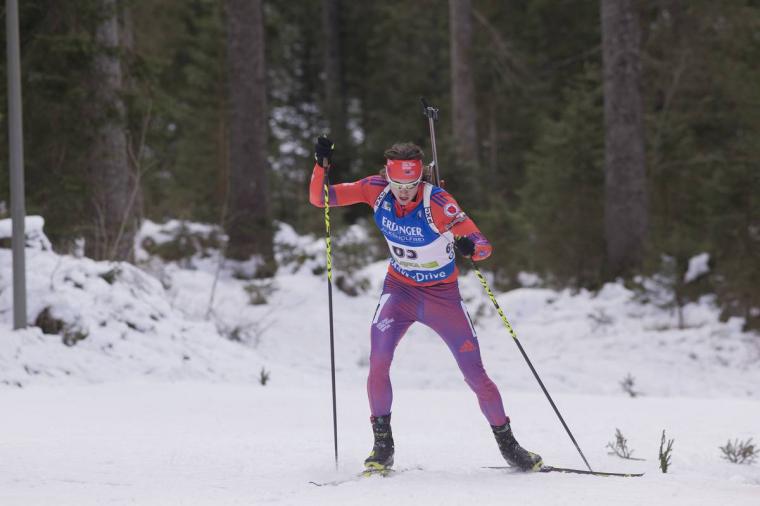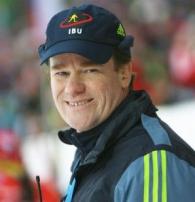

 States. USBA exists to support and encourage the development of biathlon in the United States and to prepare athletes for international competition, including the Olympic Winter Games. Founded in 1980, USBA works with biathlon clubs and Regional Centers around the country to organize training and competition at the grass roots level and staffs and finances the US Biathlon Team, Development Team and Junior Team. At its highest level, the sport is governed by the International Biathlon Union (IBU). The main season for competition runs from approximately mid-November through the end of March.
States. USBA exists to support and encourage the development of biathlon in the United States and to prepare athletes for international competition, including the Olympic Winter Games. Founded in 1980, USBA works with biathlon clubs and Regional Centers around the country to organize training and competition at the grass roots level and staffs and finances the US Biathlon Team, Development Team and Junior Team. At its highest level, the sport is governed by the International Biathlon Union (IBU). The main season for competition runs from approximately mid-November through the end of March.
Sports Destination Management: Biathlon is a sport that people are familiar with from the Winter Olympics. What kinds of participation trends is it seeing?
Max Cobb: We are seeing growth both in membership and in participation in the sport, and we’ve seen that growth for the last five years. We’re also seeing a lot of growth in the viewership of our World Cup events, which are available online.

Cobb: This season, we are hosting the BMW IBU World Cup in Presque Isle, Maine, February 11-14. We have received a lot of interest in that event, which is our biggest. We expect there to be 25 to 30 nations represented. It’s one of the last events before the world championship, and we hope to have as many as 5,000 spectators.
SDM: Is that typical for a big event?
Cobb: It’s a weekend competition, so you get higher numbers. During the weekdays, there might be 2,000 to 3,000 people watching. Either way, it’s usually a very well-attended event.
SDM: What is US Biathlon looking for when they choose host sites for competitions?
Cobb: It depends on the competition. IBU requires a course be licensed in order to host an international-level event. The only licensed courses in the U.S. are Presque Isle, Maine, and Fort Kent, Maine. We have a lot of national level and regional level events as well, and those take place across the country where there are clubs to host them, with permanent biathlon facilities.

SDM: In what areas is biathlon most popular?
Cobb: It’s not in all 50 states. New England, New York state, Wisconsin, Minnesota, Montana, Wyoming, Idaho, Colorado, Utah, California, Washington, Alaska – there are places that have very active clubs, and biathlon is going to be popular there. The common denominator is that those places have cross-country ski facilities, which tend not to be near major metropolitan areas. There are summer events that are hosted as well, but those are also usually in places that have biathlon in the winter as well. A list of clubs is available on our website.
SDM: In terms of an entry point to the sport, what are you seeing? Do people become involved with it because other family members or friends take it up? Are there teams in schools?
Cobb: We do see a lot of family involvement, with parents bringing children. But all our growth and development is club-based; there isn’t any scholastic biathlon. It’s one of the weaknesses in the biathlon system: it’s really challenging for athletes to find a way to continue their participation.

Cobb: All of us in winter outdoor sports face the challenge of climate change and the unpredictability of the weather. It gets more complicated to host an event because there is a greater demand for snowmaking in order to be able to guarantee that events will happen as we’ve planned them. For example, in late December, we held the Youth/Junior World Team Trials and Youth Olympic Games Trials in Anchorage, Alaska, and we used man-made snow.
SDM: How does US Biathlon work with its clubs to help promote the sport?
Cobb: We are just starting a program for our clubs where they can designate an event as part of our national series, and we score those events and award the club and region with greatest participation. We hope that will help clubs with their outreach. During the Olympic season, clubs will also run a program called Try Biathlon. Many of our clubs put on novice events and invited people who hadn’t tried the sport before, and had only been watching it on TV.
SDM: What do you think surprises people the most when they try the sport for the first time?
Cobb: They realize that what looks really fluid and simple on television when an Olympic athletes does it, is incredibly challenging. It’s not just that the athletes are able to ski quickly from one place to another, but they’re able to hit a vast majority of their targets once they get there; there’s really a joy in being able to balance two opposite disciplines. People learn that it’s very demanding to combine skiing with marksmanship and they definitely come away with a new respect for the athletes.

Clubs like to make it fun for beginners, and one club did a very successful job at adapting the sport by using paintball guns instead of .22 caliber rifles. It was a pretty fair simulation of the sport, and people really enjoyed it. That was a great idea – you could do it anywhere and didn’t need a rifle range.
SDM: What are US Biathlon’s goals?
Cobb: We have the overall goal to see one of our athletes win our first gold medal in in biathlon in Korea. We’ve won medals at the world championships before but never at the Olympics, so that’s something we really want.

